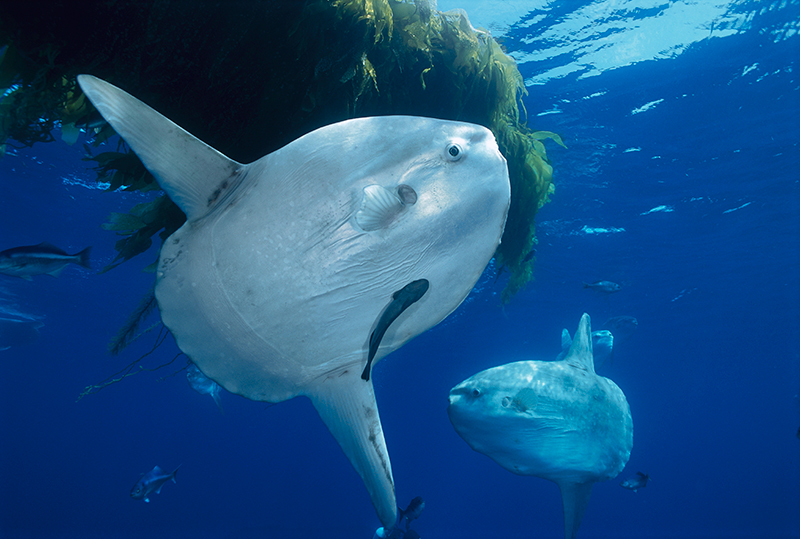Ocean sunfish is one of the heaviest bony fish in the world. Scientists distinguish bony fish from those—including sharks and rays—that have skeletons made up of cartilage. The largest ocean sunfish ever measured was more than 10 feet (3.1 meters) long and weighed nearly 5,000 pounds (2,270 kilograms). Some adults may reach an even greater size. However, most ocean sunfish weigh much less and measure 3 to 6 feet (1 to 2 meters) long.

The ocean sunfish has an unusual appearance. The fish has no tail fin. Instead, it has a rudderlike feature called a clavus. The ocean sunfish swims by flapping large dorsal (top) and anal (bottom) fins. Its body is flattened and appears thin from the front and back. It looks almost circular in profile. The skin is usually silvery.
The ocean sunfish lives in oceans around the world, except for polar waters. Young sunfish form large groups in coastal areas. Adults usually swim alone in the open ocean. An adult may dive to depths beyond 2,000 feet (600 meters). It also can migrate long distances to find food. The ocean sunfish eats mainly jellyfish, though it sometimes feeds on a variety of other foods. Smaller ocean sunfish may be hunted by killer whales, sea lions, and sharks.
The female may release about 300 million eggs, more than any other animal with a backbone. The hatchlings are about 1/10 inch (0.25 centimeter) long. A hatchling weighs about 60 million times less than an adult. Scientists do not know how long ocean sunfish may live in the wild.
The ocean sunfish is often caught accidentally by fishing boats. Schools of the young are especially vulnerable. Scientists do not know how many ocean sunfish survive in the wild. The ocean sunfish is not closely related to freshwater sunfish.
